The Apple world, including this site, has explicitly criticized Apple's choice to include an obsolete charger in the iPhone packaging for years, and it is therefore with obvious interest that the whole world, always including us, has shown great interest when Anker announced Atom PD1 (34.99 euros on Amazon) a charger capable of providing 30W in a “package” the size of a little larger than a 10W charger and relatively close with those of Apple's “plug-charger” which Watt offers just 5.
The review
The first thing you perceive when you pick up the Anker Atom PD1, next to the dimensions, is the excellent build quality . The plastics are of excellent quality, quite comparable to those Apple uses for its products. Forget the approximation typical of most Chinese accessories, even in assembly. Build quality aside, Anker's charger is really very small and compact.
The dimensions are not even comparable, as you can see from the photos below, to those of a MacBook 12 ″ Retina charger that offers the same (if not higher, given the first models reached 27W) power. Compared to an interesting competitor made by Aukey that we have just tested here on Cyberlayman, it is practically identical, but with the difference that that of Aukey provides 18W, while that of Anker 30W and therefore is perfectly capable of working with a MacBook 12 ″ retina and giving more power to the latest iPad Pro USB-C.
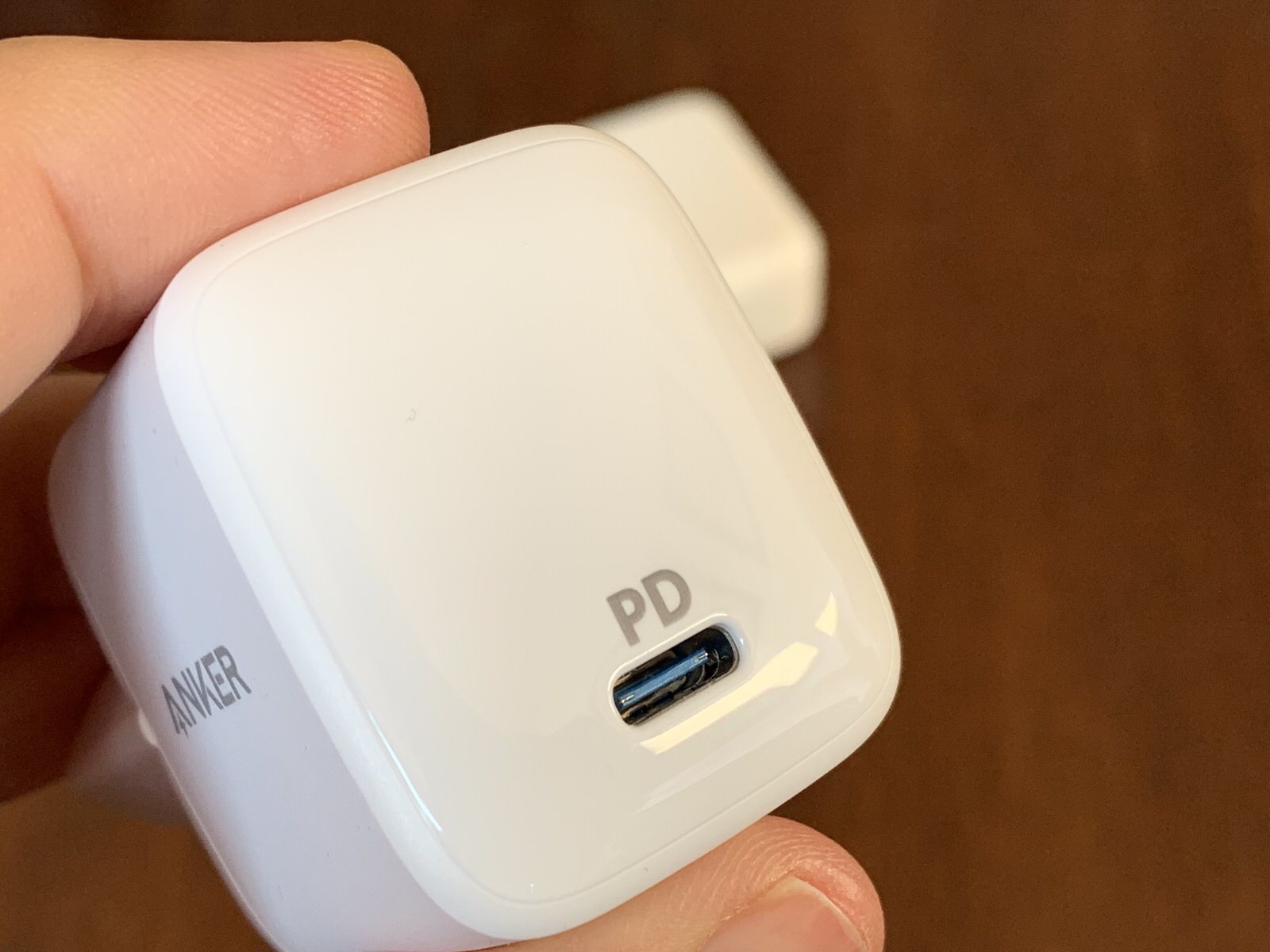 Anker Atom PD1 seen up close; it's really small
Anker Atom PD1 seen up close; it's really small
Speaking of the iPad Pro, we do not have an 18W Apple charger that comes with them, but from some images found on the net, it is evident that the Cupertino product is similar in size , but less powerful. Finally, it is equally evident that in size the iPhone charger wins (but not hands down) in size, but the power it provides (5W) is six times less than that of its direct competitor.
How Anker has managed to reduce the size of its charger in this way is the result of very long experience in the charger sector but also of research and investment in new technologies. It is used for the components of the motherboard Gallium Nitride , a semiconductor that allows you to massively miniaturize products like the one that the Chinese company has put on the market. Gallium Nitride-based transistors are 10-25% more efficient than silicon-based transistors and are also capable of producing less heat and therefore are much smaller and can be placed in products that have a small case.
1 of 5 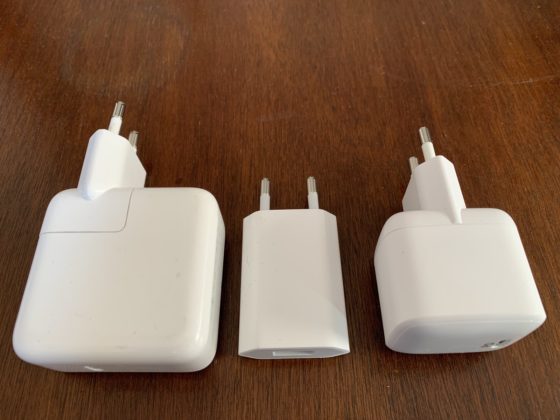 Compared to the 12 “Retina MacBook charger, the standard iPhone charger in the center
Compared to the 12 “Retina MacBook charger, the standard iPhone charger in the center 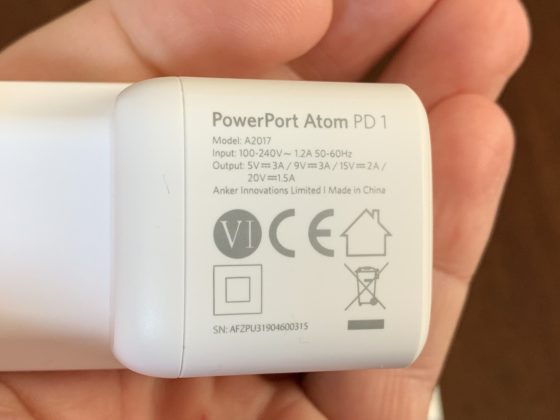 The” nameplate “data of the PowerPort Atom PD1
The” nameplate “data of the PowerPort Atom PD1 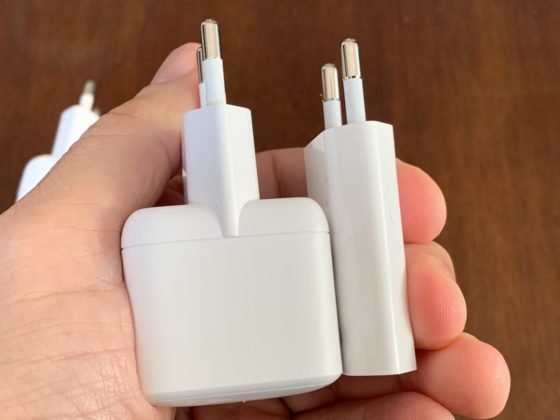 The comparison with the charger for iPhone ..
The comparison with the charger for iPhone .. 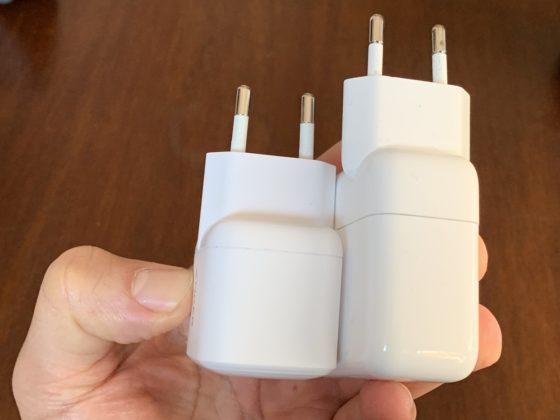 … and the one with the charger for MacBook Retina 12 “
… and the one with the charger for MacBook Retina 12 “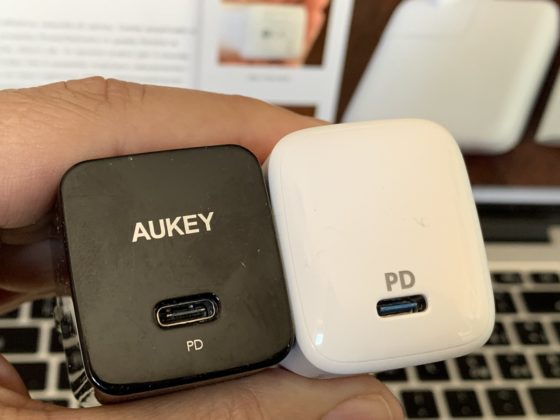 The smallest PowerDeliery charger before Anker's Atom was Aukey's
The smallest PowerDeliery charger before Anker's Atom was Aukey's
The test
We then carried out a test to verify the actual charging speed. As mentioned and as the name implies, we are facing a PowerDelivery product capable of providing the following performances: 5V / 3A, 9V / 2A, 15V / 2A, 20V / 1.5A . In practical terms for the Apple world what does this mean? First of all, it is possible to quickly recharge new iPhones , from iPhone 8 upwards. Using a USB-C Lightning cable, not the still expensive one from Apple but that of Anker which costs 6 euros less (17.99 euros) as we have shown in this article, you can push the charging up to 9V / 2A, therefore 18W . With the same charger it is possible to reach 20V / 1,5A . When tested, the charger meets these specifications and is perfectly capable of powering even a 12 ″ Retina MacBook.
Note that the Anker Atom PD1 charger with 30W of output power is the ideal charger for the new iPad Pro . Their maximum power profile is 35W, so it is vastly higher than that made possible by the charger in the box (18W) and close to the 30W of the Anker Atom PD1.
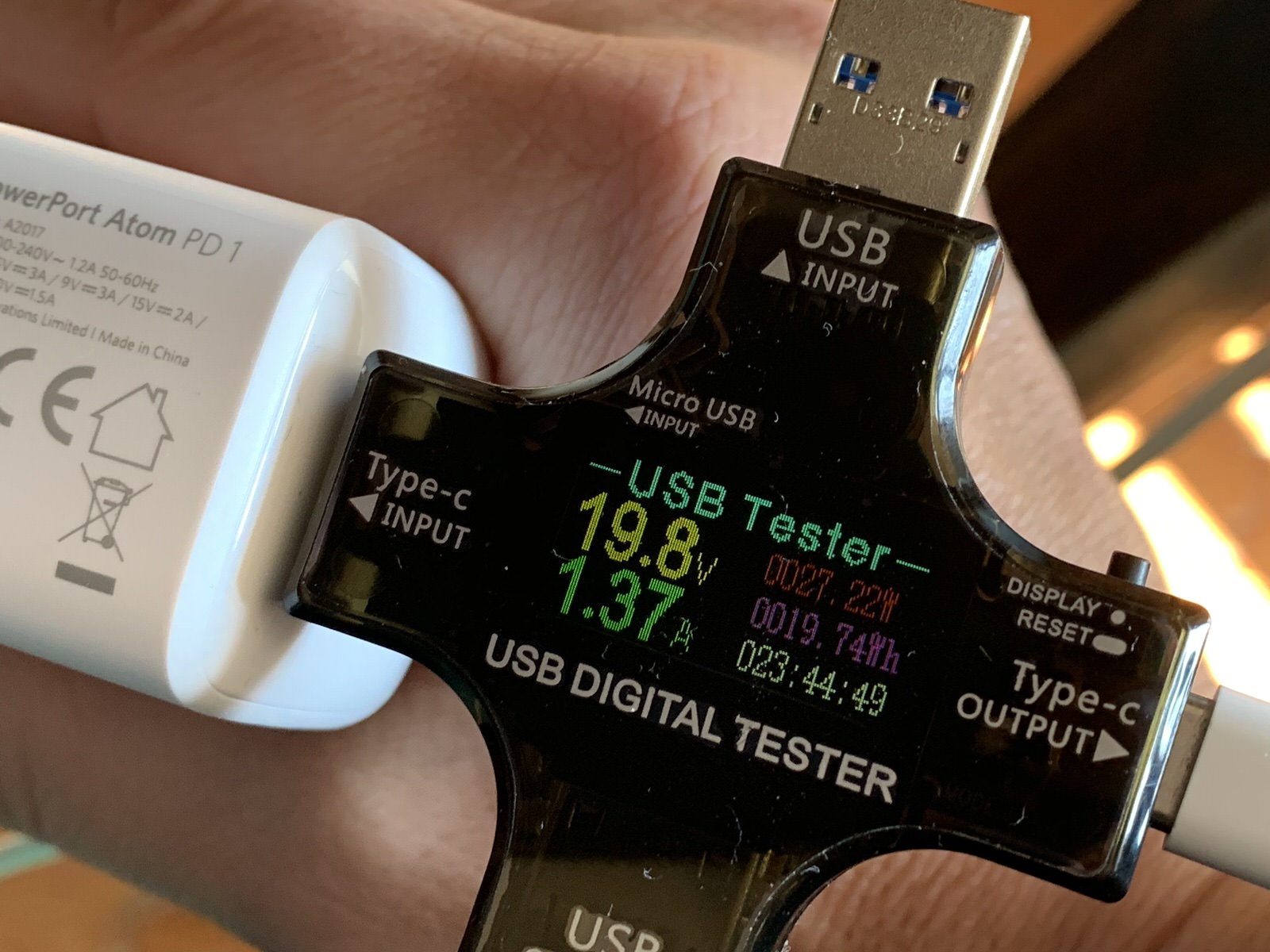 The performance with a 12 ″ Retina MacBook is equal to that of a standard 28W Apple charger
The performance with a 12 ″ Retina MacBook is equal to that of a standard 28W Apple charger
The conclusions
In conclusion, if you want to buy an alternative charger for your Apple devices, but that also applies to many Android products, the Anker Atom PD1 is the best choice . It is capable of charging much faster than comparably priced Apple accessories, iPhones and iPads (perhaps paired with a cheap, USB-C Lightning cable like Anker's) and is very, very small. An alternative could be to buy Apple's 18W chargers, but the cost-to-power ratio isn't favorable. Buying a more powerful charger capable of recharging a MacBook 12 ″ Retina, the dimensions would be much larger and the cost not comparable with that of the Anker product,
Anker Atom PD1 costs 34.99 euros and is on sale on Amazon





